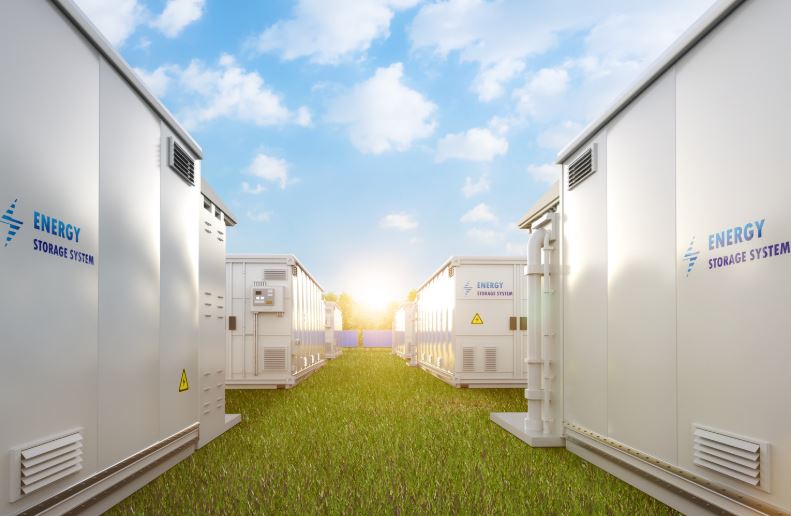The UK’s battery energy storage sector (BESS) completed just 1.5GW of capacity in 2024, a 28% decline from 2023 installations, even as the market surpassed 7GWh of operational grid-scale capacity and announced a series of high-profile project awards. This contraction coincides with a 12% fall in the capacity of newly submitted planning applications, signaling potential market maturation challenges despite continued institutional investment and technological advancement.
Project scale improvements partially offset volume declines, with average project size increasing from 52MWh to 62MWh year-over-year, indicating developer preference for larger, more economically viable installations. The recent announcement wave, including Balance Power’s 49.5MW Radwell Bury facility, Wärtsilä’s 68MW Shetland system, and RES’s O&M contract for the 720MWh Staythorpe project, represents efforts to maintain development momentum amid broader market deceleration.
Market concentration around specific technologies and partnerships emerges as a key trend. Wärtsilä’s third major collaboration with Zenobē for the Shetland Standby Project demonstrates strategic alliance formation, while the company’s GEMS Digital Energy Platform integration across multiple projects suggests technology standardization efforts. However, the project’s 15-year long-term service agreement (LTSA) structure reflects developer uncertainty about technology lifecycle costs and performance degradation patterns.
Revenue model diversification becomes critical as traditional grid balancing services face increased competition. The Staythorpe project’s positioning as “one of Europe’s largest grid-scale battery storage assets” illustrates scale requirements for economic viability, while Elements Green’s five-year O&M contract with RES beginning in 2026 indicates extended development timelines that may deter smaller investors. These extended timelines contribute to the planning application decline observed in 2024.
Geographic distribution patterns reveal infrastructure constraints affecting project development. Balance Power’s 26,767-home power capacity claim for its 49.5MW facility implies specific grid connection opportunities in Hertfordshire, while the Shetland project addresses island grid stability issues distinct from mainland market requirements. Eku Energy’s completion of projects in Essex and Buckinghamshire totaling 130MWh suggests developers target areas with favorable grid connection terms rather than optimal renewable resource locations.
Technical specifications indicate market segmentation between grid services and capacity applications. The Radwell Bury facility’s two-hour storage duration and 18,281-tonne annual CO₂ reduction projection align with frequency regulation services, while longer-duration applications remain limited. Wärtsilä’s Distribution Fault Ride Through (DFRT) capabilities for the Shetland project demonstrate specialized grid support functions that command premium pricing but require sophisticated control systems.
Competitive dynamics shift toward operational expertise as development opportunities become more constrained. RES’s O&M contract award “for its clear operational strategy, high-voltage capability, and commitment to long-term asset performance” highlights technical competency requirements that favor established players over new market entrants. This operational focus may contribute to reduced speculative development activity reflected in declining planning applications.
Financial structuring innovations appear limited despite institutional interest. The absence of specific financing details for recent projects suggests continued dependence on developer balance sheets rather than project finance structures. Long-term service agreements spanning 15 years for Wärtsilä and five years for RES indicate attempts to create predictable revenue streams, but these terms may increase project development costs and reduce returns.
Integration challenges with existing grid infrastructure become more apparent as the project scales increase. The Basildon project’s location near existing generation sources, including solar PV and gas-fired peaking stations, suggests grid connection optimization, while coordination with the Tilbury to Norwich grid upgrade indicates infrastructure dependencies that could affect project timelines and costs.
Market maturation indicators include increased focus on biodiversity net gain requirements, as demonstrated by Balance Power’s 44.25% biodiversity improvement commitment, and site restoration obligations that add project lifecycle costs. These environmental compliance requirements may contribute to reduced developer interest and the observed decline in planning applications.
The sector’s transition from rapid expansion to selective development suggests fundamental shifts in risk-return profiles that challenge earlier growth projections. Despite continued project announcements and technological advancement, the 28% installation decline and reduced planning activity indicate structural constraints that may persist absent policy intervention or significant cost reductions in battery technology and grid integration systems.
